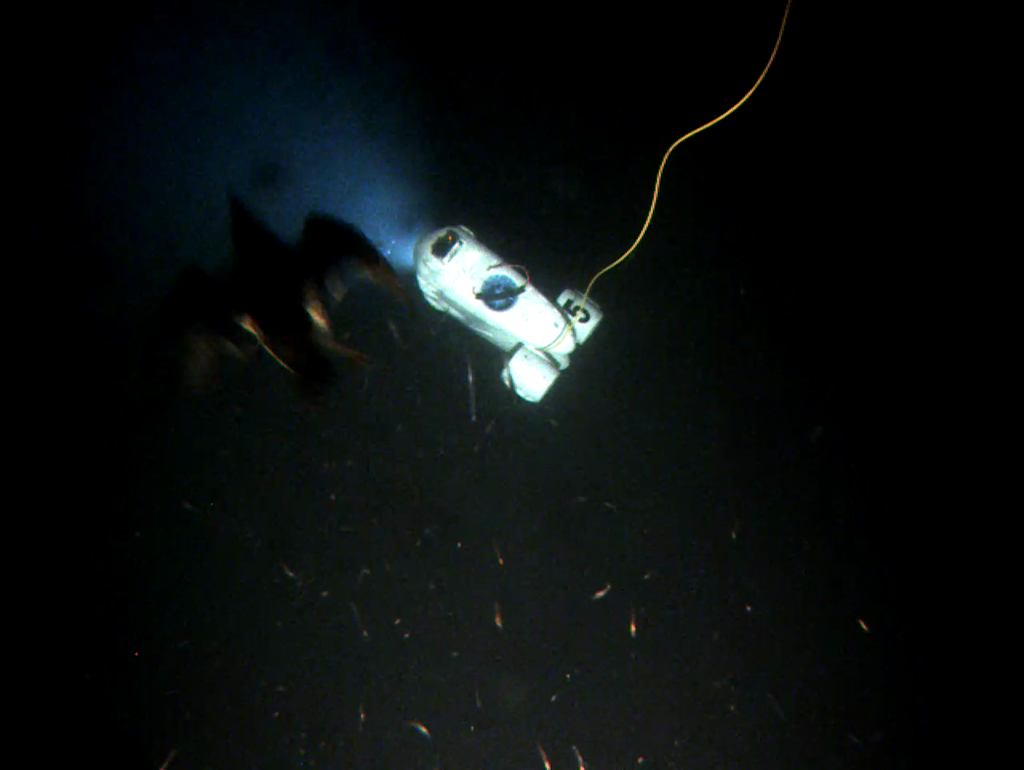Robotics vehicles from AUR-Lab at NTNU (Norwegian University of Science and Technology), Tallinn University of Technology International and Blueye Robotics were deployed to map and monitor both seabed habitats and water column.
Looking for new species in the arctic
Photo: Martin LudvigsenBlueye and another underwater vehicle diving to film the Artic kelp species Laminaria Solindongula and Blue mussels. Blue mussels were observed on Svalbard in 2004 for the first time in thousand year. A consequence of rising global temperatures.

Helmet Jellyfish (Periphylla periphylla)
First observation of the Helmet Jellyfish on Svalbard. Photo: Geir JohnsenAs the temperature increases, the vehicles find species that are new in the Arctic.

